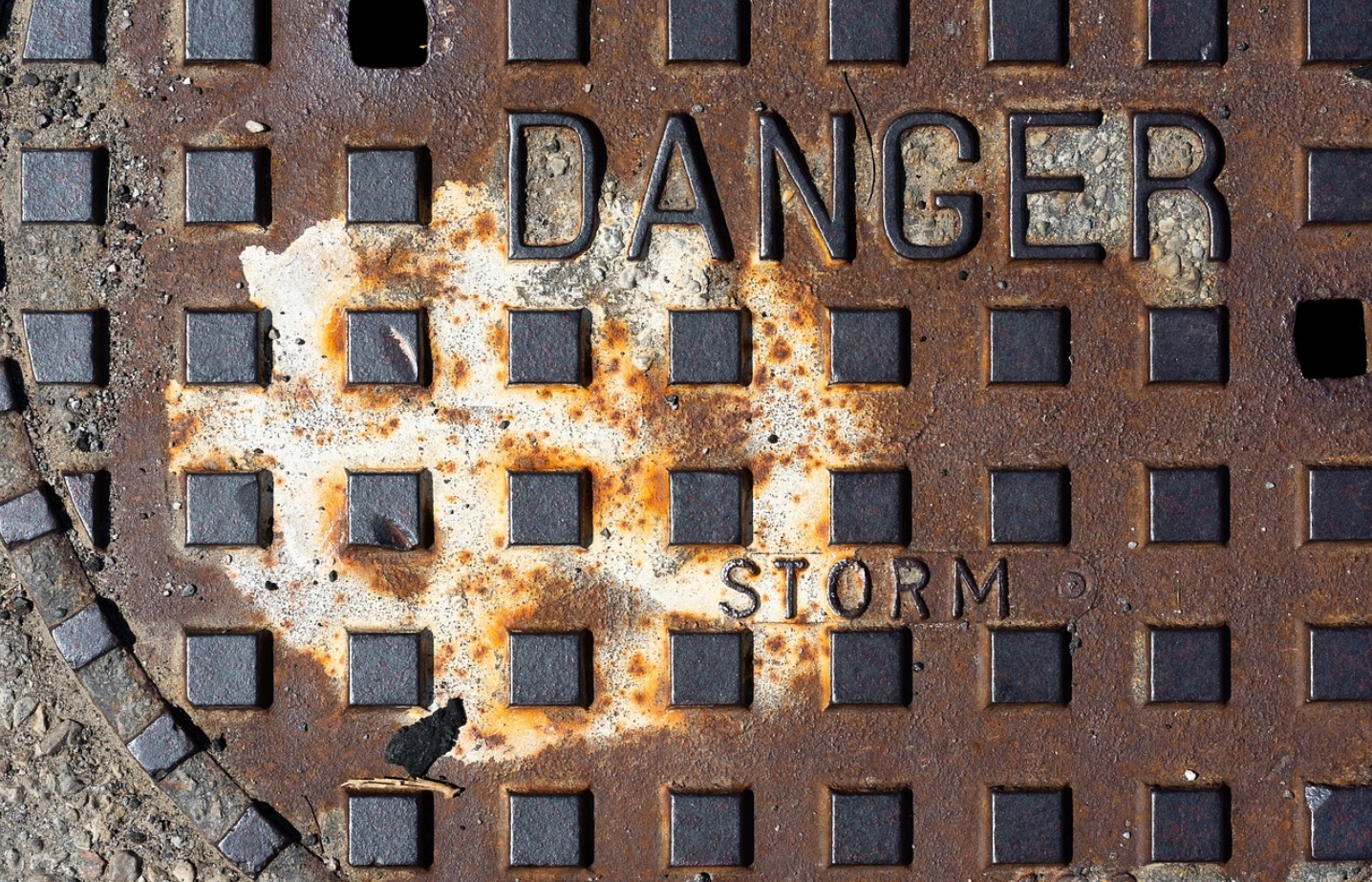Storm drains are pieces of infrastructure that collect rainwater to prevent it from flooding properties and streets. Water travels through the grill into an underground pipe network that transports it to nearby waterways.
Sometimes, however, catch basins and storm drains require repair. Cracked or collapsed storm drain pipes might leak water into the surrounding soil. If there is a heavy rainstorm, they may not be able to transport water away in sufficient volumes to waterways to protect roads and private property from flooding.
DeBuck Construction has vast experience in catch basin and storm drain repair. In this article, we outline our processes and what you can expect when you choose our services.
Catch Basin And Storm Drain Repair
While people use the terms “catch basin,” “storm drains,” and “storm sewers” interchangeably in everyday speech, they are, in fact, different things.
The catch basin is the funnel-shaped piece of concrete that collects and channels water towards the grate that covers the drain. You usually find catch basins by roadsides and parking lots to keep them free from flooding. They can appear around the edges of buildings in certain locations, as well. Thus, they are a specific part of the storm drain sewer system – not the whole thing.
Catch basins regularly require repair. Over time, water can seep into a pocket of space between the drain’s concrete and the earth below. This water freezes and expands during winter, pushing the catch basin upwards and pushing down on the soil below. Once it thaws, the basin sinks into the newly-formed void, making it appear sunken – a process that often leads to cracking.
Sometimes, problems occur lower down in the storm drain. For instance, the drain’s concrete lining can fail. This will cause the drain body to sink into the ground, bringing surrounding asphalt with it. Wear and tear can also lead to pipe collapse, blocking water flow.
Here, we will discuss the typical repair process for a heavily damaged catch basin and storm drain combo. Please note, though, that sometimes only the catch basin requires repair.
Step 1: Saw Cut The Concrete Around The Catch Basin
The first step is to excavate the damaged material from the storm drain. The repair starts by marking out the area to be cut using spray paint and then using either a handheld or walk-behind saw to cut through the pavement.
Step 2: Excavate Existing Asphalt
Once workers complete the cut, the asphalt (or other material around the drain) is ready for excavation. Usually, contractors use a digger to remove the surface layer, avoiding most of the manual work. However, they may need to use a pickaxe to remove additional surface material to allow the digger bucket to get in underneath the material to scoop it out.
Most properties have two stages of asphalt – a base layer and a top layer. Often, elements of both layers require excavation. Contractors take all waste material for disposal.
Step 3: Remove The Catch Basin Lid And Frame
Storm drains have a catch basin lid and frame, including the grate and the structure that supports it. Once contractors remove the surrounding asphalt, they will remove these components, either by hand or using a loader, ready for reinstallation later on.
Step 4: Excavate The Old Riser Rings Down To The Cast Concrete
If the old riser rings are degraded, contractors will then excavate them to facilitate repair. Usually, this step involves removing all of the blocks down to the cast concrete, several feet below the surface, and then removing the surrounding clay and muck to make room for the new installation.
At this stage, contractors will also roughly clean the top of the cast concrete to make it easier to install new riser rings. Rocks and debris can cause riser rings to become wobbly or sit unevenly in the cavity. Cleaning the base allows them to sit flush, improving the stability of the drain.
Step 5: Install New Riser Rings
Once contractors remove all the debris, the next step is to install the new riser rings in the hole left by the excavation.
In some ways, this is the trickiest part of the process. Workers have to install enough concrete to push the drain to the surface, but not so much that it protrudes and causes water to pool.
If workers are using precast riser rings, they will usually fill the hole in increments, installing the optimal number to create a basin-shaped indentation that collects the water.
Step 6: Reinstall The Catch Basin Lid And Frame
The next step is to reinstall the catch basin lid and frame on top of the riser rings (or cast concrete). Again, workers can either do this by hand or use a digger.
Step 7: Reconstruct The Base Around The Riser Rings
After that, we reconstruct the base around the riser rings. In general, contractors will not use previously-excavated clay and muck to fill the void and cover the entire excavated area. Instead, they will add new aggregate – a mixture of sand, crushed rock, and gravel.
The material is usually quite loose, so contractors will use a compactor to ensure that it doesn’t settle later.
Step 8: Reapply The Asphalt Or Concrete
The final step is to lay down layers of asphalt or pour the concrete. Asphalt requires compacting so that the new layers are level with the surrounding pavement. Concrete requires smoothing over after pouring to ensure a flat finish.
Choosing A Catch Basin And Storm Drain Repair Specialist
How long it takes to repair storm drains depends on the extent of the damage and who you choose to repair it.
DeBuck Construction has tremendous experience in residential concrete services. We perform catch basin and storm drain repair quickly. Our impressive array of experience in both asphalt and concrete makes us the ideal choice. Contact us today to benefit from our expertise

